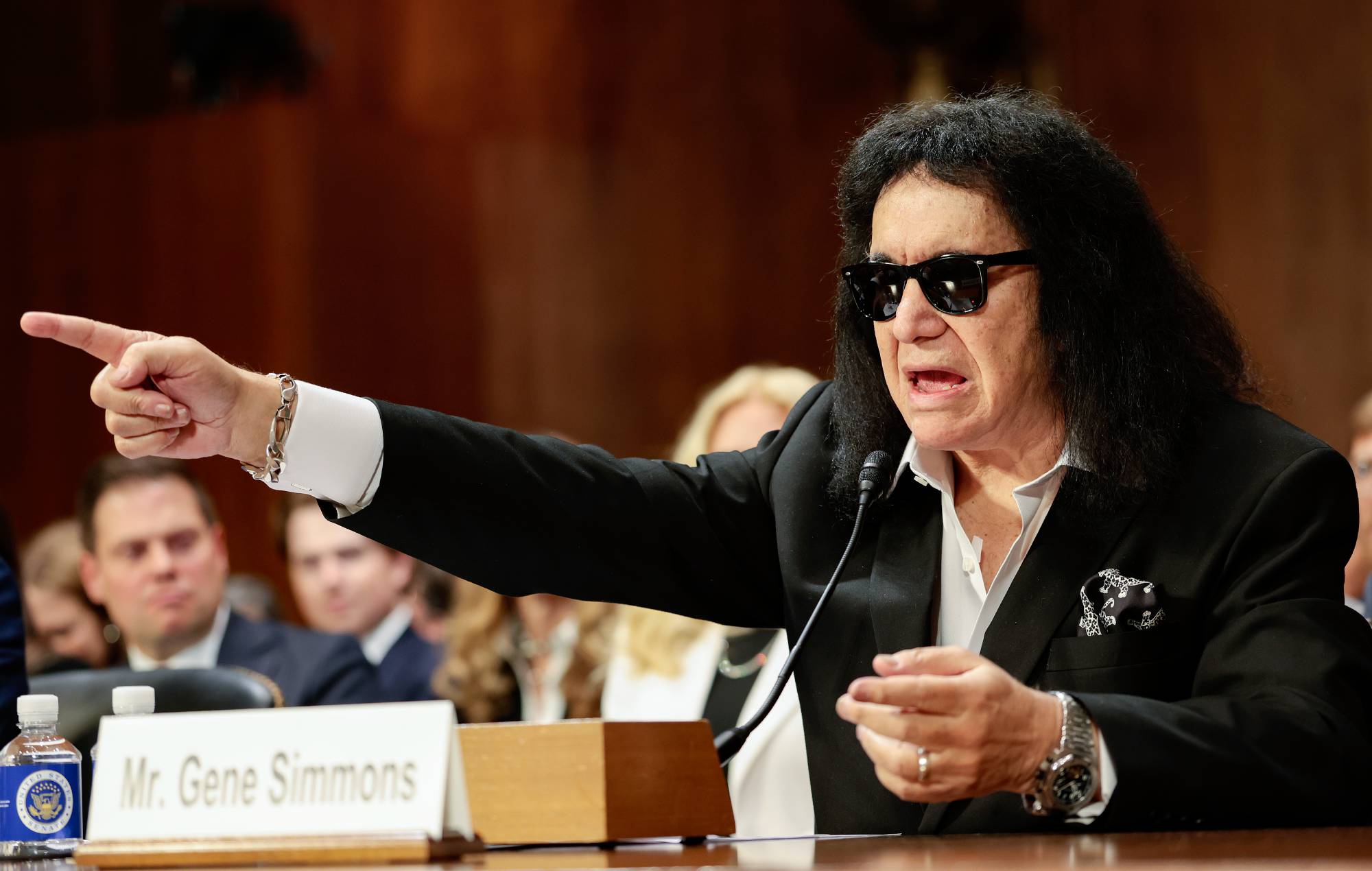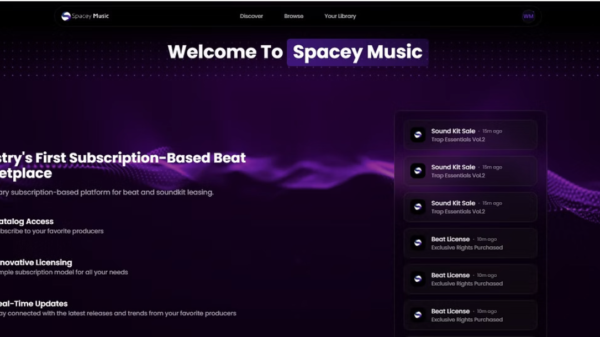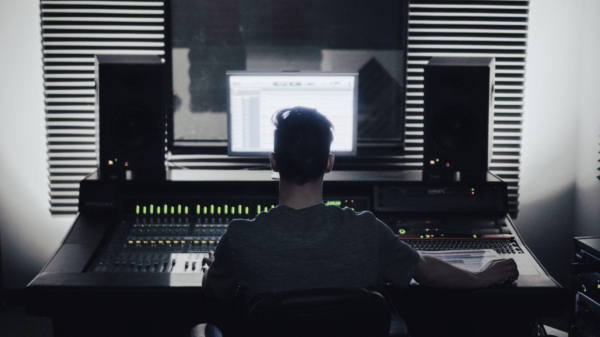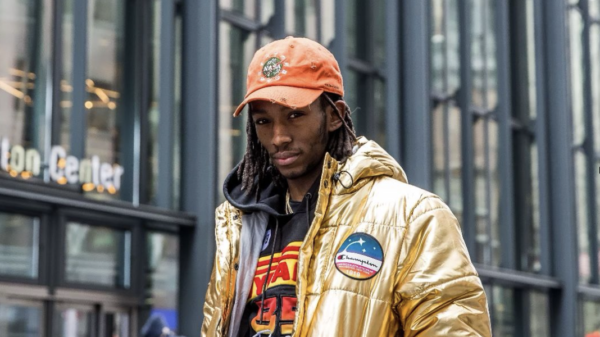
There’s a powerful moment at the end of the newly restored Beatles docuseries Anthology when George Harrison muses about the band’s future. “The Beatles will just go on and on,” he predicts. “In those records and films and videos and books, and in people’s memories and minds. The Beatles has just become its own thing now. And the Beatles, I think, exist without us.”
Then George breaks into a mischievous grin and quotes a song that his old mate John Lennon once sang, back in 1966. “Play the game existence to the end of the beginning,” he says. “Tomorrow never knows.”
George wasn’t lying. He spoke these words in the early Nineties, yet it was a prophetic way to sum up the Beatles. Nobody in the Sixties could have imagined how huge the Fabs would be in the Nineties, just as nobody in the Nineties could have predicted how huge they are now. When the original Anthology debuted as a TV miniseries in November 1995, it blew up into a global celebration, with three top-selling companion albums and a lavish book. In 2025, we’re as far from the original 8-part Anthology as Anthology was from Rubber Soul or Revolver — yet somehow, the lads just keep getting more vital and influential all the time. Tomorrow never knows, indeed.
Anthology is finally making its long-awaited return, debuting on Disney+ on November 26. It’s been digitally restored and expanded by Peter Jackson’s WingNut Films team, using the same technology they used for Get Back, which dazzled fans four Thanksgivings ago in 2021. Giles Martin has remastered the music and produced a new Anthology 4 album. There’s also an emotionally intense new Episode Nine, focusing on the three surviving bandmates, who meet up in the early Nineties, to work on this project together.
Anthology holds up as the definitive Beatles documentary, told by all four in their own words. Part of what made it so innovative — and keeps it so fresh today — is that it’s just them. No narrator, no talking heads, no celebrity testimonials. Just Paul McCartney, Ringo Starr, Harrison, plus archival interviews from the late John Lennon, looking back at people and things that went before. It captures the frantic madness of their life as a band, young boys transforming the world in just a decade together. As Episode Nine director Oliver Murray tells Rolling Stone, “It blows my mind that George is 24 when he finishes Sgt. Pepper. When I was 24, I was probably trying to make a bong out of a potato.”
Editor’s picks
But it took time for the ex-Beatles to come together for Anthology, 25 years after the band’s ugly demise, telling the story of their long and winding friendship. “It was brave, in a way,” Giles Martin says now. “It was a surprise for everyone, including themselves. But it was a cathartic process for all of them. I think they’d forgot what it was like, because there’d been so much mud thrown in different directions since they broke up. I think it’s a little bit like finding an old photo album, looking at photographs, and then realizing actually you had an amazing relationship with that person.”
When the Anthology doc debuted in 1995, it was a cultural shock. It defined the Beatles as we’ve known them ever since — not as an event that happened back in the Sixties, but an ongoing phenomenon that keeps growing and evolving. In Episode Nine, the surviving bandmates confess that not even they can explain the band’s astounding afterlife — they’re frankly weirded out at how much the world loves them. “It being 30 years ago, it is all getting fairly legendary,” Paul says. “A bit TOO legendary for our liking, because we’re still living it.”
Anthology finally rescued the Beatles from the Sixties. For way too long, the Fabs story had been framed with a sickly sense of nostalgia — a fairy tale from the good old days. But by the time Anthology arrived in the Nineties, there was a new generation of Beatles fans too young to relate to that nostalgia, or to think of this music as a thing of the past — because the Beatles were more vibrant and influential and challenging than ever, in every corner of the music world. As the Wu-Tang Clan’s Raekwon said, “The Beatles are timeless dudes doing timeless things.”
Related Content
At the time, people were stunned at how much they loved Anthology — sure, everyone expected to enjoy it, but not this much. It was (and is) a joy to spend time with, whether you drop in anywhere at random or binge the whole ten hours. So much lore. So many laughs. Casual fans flipped into obsessive geeks overnight. All three albums — outtakes, demos, live slop, studio chatter — became mega-selling hits, in the days when people paid money for music. Hell, it’s no coincidence that 1997 was one of the best years ever for rock albums — every band made their next record under the Anthology spell.
But it badly needed a technical upgrade. Most fans probably haven’t watched it in years, since it’s only been available via old VHS tapes and DVD, where the archive footage looks shabbier with the years. The new version grew out of the Get Back project, when Jackson and his Wingnut team took hours of previously unusable footage and cleaned it up into the Beatles, loud and clear and laughing and fighting together. Martin says, “Anthology was that organic process of doing Get Back, with Peter Jackson and the team saying, ‘Maybe we should look at redoing Anthology 30 years on.’” Martin used that de-mixing technology for the music. The famed Shea Stadium concert, drowned out by 56,000 screaming fans, now sounds startlingly clear. “I’d like to say, ‘It sounds like if you were there,’ but of course if you were there, you wouldn’t have heard anything.”
For Martin, it’s a full-circle moment. He was his father’s teenage apprentice on Anthology the first time around, years after George Martin produced the band. “The first time I ever came to Abbey Road with my dad was for Anthology,” Giles says. “It was the first time I heard the tapes and I was mesmerized. I just couldn’t believe how good they sounded — I remember ‘A Day in the Life’ on four-track tape being played to me in that room. It’s probably quite a poignant thing for me, because ever since then, my ambition in everything I’ve done with the Beatles is to try and get that feeling.”
The band’s right-hand man Neil Aspinall began the Anthology project in 1970, assembling footage into a documentary he planned to call The Long and Winding Road. But in those days, the last thing the ex-Beatles wanted was to revisit their past. “We were at war then,” Paul says in Episode Nine. George, sitting right beside him, adds, “We weren’t talking much.” (Except in songs like “Sue Me Sue You Blues,” “How Do You Sleep?,” “Dear Friend,” “Early 1970,” “God,” and the many other solo songs they aimed at one another.) Their wounds started healing over the years — when John and Yoko separated for a while, Paul was the one she sent out to L.A. to advise him on how to win her back. George, Paul, and Ringo jammed at Eric Clapton’s wedding in 1979. (John was furious he wasn’t invited.)
But bizarre as it seems now, there was never a single moment after 1969 when all four Beatles set foot in the same room. They thought they had time. They didn’t.
Any dreams of a reunion, personal or creative, died in December 1980, when John was murdered by a stranger with a handgun in New York. It was a decade later, in 1991, when British directors Bob Smeaton and Geoff Wonfor began to expand Neil Aspinall’s shelved film into something new, with the surviving Beatles finally ready to tell their side of the story.
“George and Paul would have dinner with each other occasionally,” Martin says. “They’d certainly be in touch. And that’s the thing people don’t realize — they think they’d been in exile for all those years. But to do the Anthology, that’s a different thing — to be on even soil, if you like. You can see it’s refreshing for them because, as they always said, there’s only four people who knew what it was like to be in the Beatles.”
They still had their conflicts, for sure — it was only a couple of years after Paul boycotted their Rock & Roll Hall of Fame induction ceremony, because of their financial disputes. The doc became Anthology instead of The Long and Winding Road — George couldn’t bear naming it after a Paul song. Yoko eventually screened it with a stopwatch, to measure how much screen time Paul got versus John. Yet the group still shared their unbreakable bond. “When we got over our business troubles,” Ringo explains in the film, “We decided that we might try and do the definitive story of the Beatles. Seeing as other people had a go at it, we thought it might be good from the inside-out, rather than from the outside-in. We’ve heard it from everybody else—now you can hear it from us.”
The new Episode Nine shows the surviving Threatles in the Nineties, as they gather to work on Anthology and play some unfinished songs that John left behind. “Free As A Bird,” “Real Love,” and “Now And Then” were home demos recorded at the Dakota in the late Seventies, from a cassette that Yoko provided. “It was emotional listening to the tape for the first time,” Paul says. “I said to Ringo, I warned him, ‘You better have your hanky ready when you listen to this.’ Because it’s quite emotional — hearing our old mate sing this little song.”
They cut “Free As a Bird” and “Real Love,” both hit singles, yet gave up on “Now and Then” in one afternoon. The other two didn’t share Paul’s enthusiasm for the tune, and neither did producer Jeff Lynne. Nobody could even tell what Paul heard in it — but with typically bloody-minded Macca tenacity, he refused to let it go. “With anyone else, this would definitely be the end,” he admits. “But with the Beatles, you’ve got to watch out—they could do it. There’s always a surprise somewhere down the line. It might not go away, that one.” Paul called that right. Decades later, he turned this demo sketch into the Beatles song he always knew it deserved to be — a soulful tribute to his old mate. “Now And Then” became the band’s final song, a worldwide hit in 2023.
Episode Nine ends with the same heart-grabbing scene as the original Anthology: George, Paul, and Ringo, sitting in a field of grass, strumming guitars and singing lazy songs beneath the sun. “This has been a really nice day for me, chaps,” Ringo says. The other two reply with witty quips, but Ringo is utterly earnest, not even a smile. “It’s been really beautiful and moving for me. I like hanging out with you two guys.”
It’s more poignant now than ever to see them play guitar in the good-day sunshine, lounging on the lawn at George’s Friar Park estate. They probably figured they’d be doing this every ten years for the rest of their lives. They had no way of knowing that just a few years later, George would get viciously attacked and nearly killed by an intruder in his home, not far from the spot where they’re sitting. And just two years later, Harrison was gone, dead of cancer in 2001, at the tragically young age of 58.
“Episode Nine needed to offer a new layer of self-reflection,” Oliver Murray says. “It has a different heartbeat to the others, simply because it was made later. It’s the ‘coda episode.’ My North Star was to take a look at how they felt to be a Beatle. What did it cost to be a Beatle? I think it’s quite melancholic at times.” Their shared history still seems painful onscreen. “It is like a living conversation between them,” Murray says. “This wasn’t some fireside chat where they think about the past and this distant thing that they were in. It’s something that they wear, and at times it’s heavy. So Episode Nine hopefully gives space to watch them looking inward, rather than just talking outward.”
More than anything, Anthology is the story of a friendship — John, Paul, George, and Ringo are the most famous friendship in our culture, the foursome that symbolizes the highs and lows of being in a group. That’s why Paul has been getting up there onstage all fall, on his amazing current tour, and singing John’s 1965 confession “Help!” for the first time since the Beatles broke up. It’s a vulnerable moment: Paul, in his 80s, getting back to a song his best friend sang in their early 20s, still trying to make sense of John’s pain, still trying to heal their broken bond. He’s got so many of his own hits that he could perform instead. But in his heart, he’s still singing for John.
Of course, Lennon’s death haunts everyone in Anthology. “I feel sorry for John,” George says in the new episode. “Because the Beatles went through a lot of good times, but also went through some turbulent times, and as everybody knows, when we split up, everybody was a bit fed up with each other. But for Ringo, Paul and I, we’ve had the opportunity to have all that go down the river and under the bridge and to get together again in a new light. And I feel a bit sorry that John wasn’t able to do that. I think he would’ve really enjoyed this opportunity to be with us again.”
The Fabs’ laughter and camaraderie is so contagious through all nine episodes, like the famous moment where Paul defends the White Album. (“It was great! It sold! It’s the bloody Beatles’ White Album! Shut up!”) But it’s also full of heartache, as when Ringo recalls how he quit and told his bandmates, “I feel unloved and out of it, and you three are really close.” Each one replied, “I thought it was you three.” George is a master of bitchy one-liners. But in the new episode, when they accuse McCartney of always nagging the others into working harder, Paul retorts, “I like the Beatles. I like to work with the Beatles. I’m not ashamed of that. It’s what I love in life — all that making music.”
“Episode Nine may conclude the series, but it’s not an ending,” Murray says. “I hope it’s a handover and a conversation between one generation and the next, because I wanted to leave with as many questions as answers. When you look at the Beatles, it tells you as much about where WE are culturally as it does about the Beatles themselves. The fact that the legacy is still alive and well is astonishing. They’re a sort of cultural language that’s carried from one generation to the next, and now it’s in the ground-water. And we’re all drinking Beatle water, whether we know it or not.”
Giles Martin remastered the music, including the concert performances. “The live audio was really challenging,” he says. “I tried a bit of this with when we did Eight Days a Week with Ron Howard [in 2016], then Beatles ’64 [in 2024], with Shea Stadium, the Washington concert, Budokan. I then used the de-mixing technology we developed with Peter.” Obviously, nothing’s been altered in the music — we just hear more of what the boys actually played in the room that day. “The challenging thing is the gradations of how good you want to make it versus how real. And I always go for the most real it can possibly be. With this amazing technology, I can isolate John’s voice on the Washington concert — I can hear only John. No one ever heard that before.”
As a result, the live material really captures the lads’ raw primal energy. “That’s just how they sounded,” Martin says. “I’m not adding anything to it. There’s certainly not some sort of performance plug-in I can switch on that makes them better. They’re just really good — the only difference is now you can hear them be really good. It’s like when they cleaned up the Sistine Chapel, they found out that Michelangelo wasn’t as dark and broody as they thought he was. It’s the same thing with the Beatles—you clean them up, and you realize they’re basically just like a live punk band.”
Martin remixed all three of the Anthology albums, originally produced by his dad, plus the new Anthology 4. Martin says, “It made sense, once we were redoing the TV series, to have a look at doing an extra record for people as well.” It has 13 previously unheard tracks (or 16, depending on how you count) from the vaults, mostly from 1964-1965, with great versions of “Tell Me Why,” “If I Fell,” and “I’ve Just Seen a Face.” The other 20 tracks are culled from the special editions Giles has produced over the past decade, in the series that began with the Sgt. Pepper and White Album box sets. “It’s purely based on, ‘Hey, check this out—this is fun to listen to,’” he says. “That way it generates itself, as opposed to market forces or anything like that.” All four volumes are collected in the 191-track Anthology Collection.
The first time around, the Anthology phenomenon shocked the entire music industry — but nobody was more shocked than the surviving Beatles. This had to be the final frontier, right? Why were millions and millions of consumers eagerly buying their outtakes? What was wrong with these people? Paul quipped, “George Martin reckons if we put out anything after this, it’ll have to be issued with a government health warning.” Little did they know. Not even Mr. Martin could have imagined how his boys would get far more famous and beloved in the 21st century. Just a few years after everyone assumed Anthology was the end of the line, their 1 compilation blew up into the best-selling album of the 2000s, moving something like 30 million copies. It’s still neck and neck with Adele’s 21 as the biggest-selling album of the century so far — even though all the songs were hits before Adele was born.
Trending Stories
That’s the strange paradox of Anthology: the Beatles have never belonged to yesterday. These guys and their songs always belong to tomorrow. And when it comes to their future, tomorrow doesn’t know a damn thing. There’s only two things you can safely predict about them: (1) it’s crazy how much people adore the Beatles, and yet (2) the world’s collective craving for them keeps growing anyway. “I couldn’t put it any better than George does in the episode,” Murray says. “The Beatles will go on without all four of them, because they belong out with us now.”
But Anthology brings the story down to these boys from Liverpool, and the unique four-way chemistry that bonded them together. “They became the closest friends I’d ever had,” said Ringo. “I was an only child and suddenly I felt as though I’d got three brothers. We really looked out for each other.” Watching Anthology means not just celebrating that bond, but becoming part of it, as the music brings the Beatles to life.





























